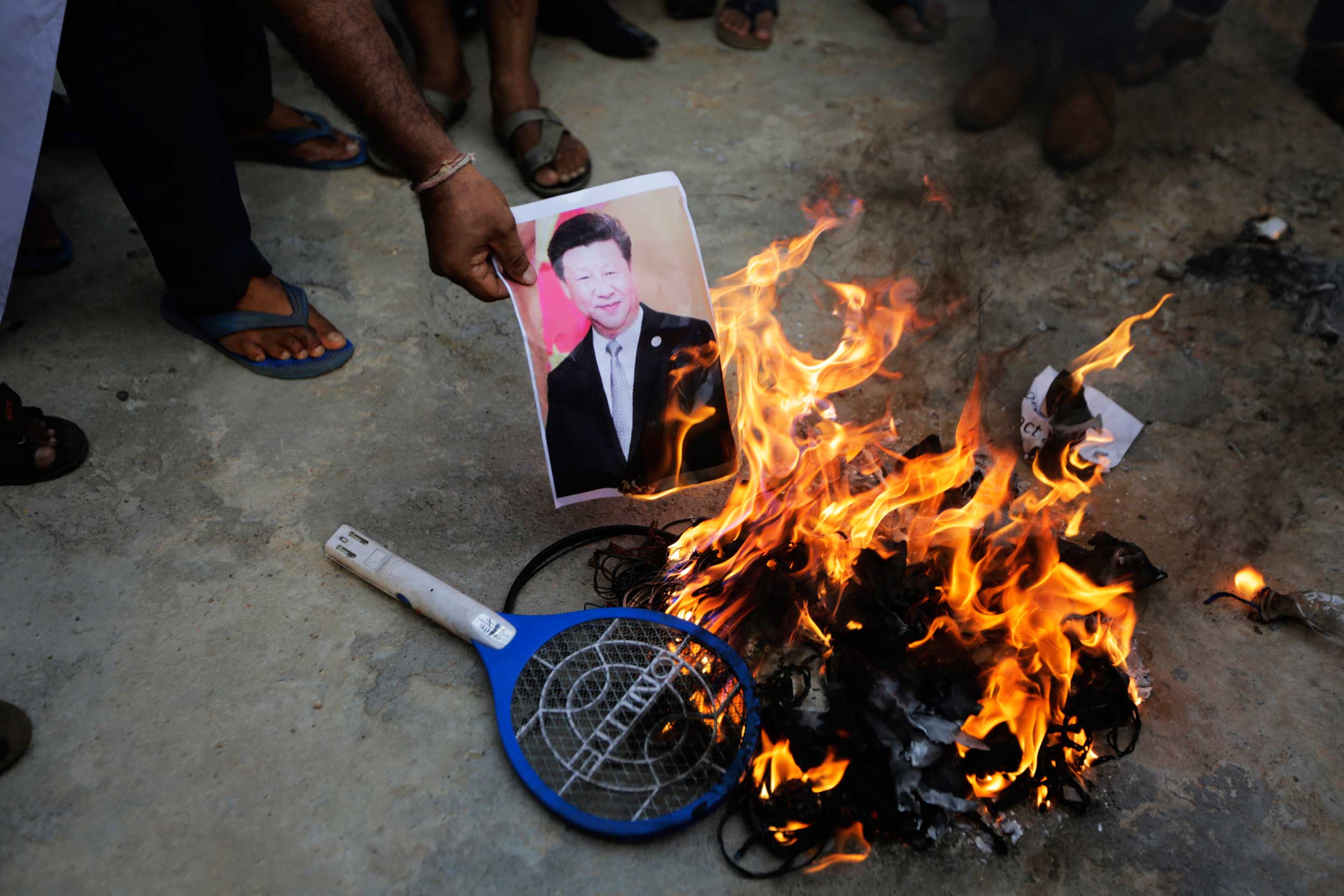India today finds itself stressfully coiled along its frontiers as never before. Lives have been lost in clashes with the Chinese for the first time in 45 years; ties with Pakistan remain cantankerous and the fence pepper-hot; Nepal has cocked a snook, endorsing a new map that includes territories India claims. India has taken border casualties from each in the past week.
Prime Minister Narendra Modi has not been short on opportunities for optics these past years, dropping in on Lahore to hug Nawaz Sharif, the then Pakistani Premier, feting K.P. Sharma Oli of Nepal and promising him a visit, staging multiple summits, a couple of them one-on-one, with Chinese supremo Xi Jinping. All of those images have, one after another, turned sardonic; photo bonhomie has turned to patent bitterness.
It probably is a reflection on the minders of external strategy that New Delhi appears so deeply swamped, diplomatically and militarily, in its neighbourhood.
Neither has it ever been so opaque and unwilling to spell out what has gone wrong and how; and what’s being done. It has, instead, intermittently leaked information, or issued cryptic statements that provided — probably by design — little sense of the simmer that came to a bloody boil in the Galwan Valley.
There exists no spelt out government narrative on how and why events have marched to a flare-up. Over the past nearly eight weeks of blow-hot-blow-cold confrontation between Indian and Chinese border troops around Pangong Tso, Hot Springs and the Galwan Valley, the government’s posture has remained a mix of denial, indifference and obfuscation.
The blunt truth is that New Delhi has to date put out no denial of widespread reports that China’s People’s Liberation Army (PLA) has made deep incursions into what India deemed its side of the unmarked Line of Actual Control (LAC) and probably squats of 50 square kilometres of grabbed territory. The blunt truth also is that New Delhi has spoken of moves at both the diplomatic and military levels to “de-escalate” and resolve issues, but has never spelt out what it is that needs resolution and de-escalation.
There are, understandably, pressing imperatives of national security and military strategy that dictate caution and confidentiality in such matters. But the government’s attitude on the military escalation in eastern Ladakh has come to be perceived in some sections as trying to press the lid on violations of national integrity and being averse to questioning.
The Congress, has, for instance, demanded that the government take the Opposition into confidence on what has become an issue of mounting concern. That demand lies stonewalled. Prime Minister Modi, usually swift on messaging, has yet to say a public word on the standoff, much less engage in confidence with the Opposition.
It was only on May 30, a good six weeks after first notice of significant troop movement on the Chinese side was reportedly received, that defence minister Rajnath Singh acknowledged what could be deemed a problem in eastern Ladakh: a visible Chinese build-up.
But he chose his words carefully; the Chinese, he revealed, have “arrived in big numbers” --- “bahut badi sankhya mein aa gaye hain”. The defence minister was smartly unspecific about where the Chinese --- read the PLA --- had arrived, there was no affirmation of any breach of the LAC or a Chinese military ingress.
About the time Rajnath Singh was skirting the thin line between admission and deniability, the media was already flooded with reports of the PLA’s ingress; those reports, and subsequent ones, await a counter from the Indian side.
A meeting was held between Indian and Chinese military commanders on the frontlines on June 6; mild iterations were made about things being “under control” and de-escalation efforts being afoot. A week later, Army Chief Gen. M.M. Naravane, spoke again of the situation in eastern Ladakh being “under control”. During a brief interaction with journalists, Gen. Naravane said: “I would like to assure everyone that the entire situation along our borders with China is under control. We are having a series of talks which started with the Corps Commander level and has been followed up with meetings at local levels…as a result a lot of disengagement has taken place and we are hopeful that through the continued dialogue all perceived differences that we have will be set to rest.”
Again, there was no reference made to what it was that provoked the negotiations, what situation was the “disengagement” sought from, what were the “differences” that he hoped would be “set to rest”.
Last night’s violent engagement in the Galwan Valley, which reportedly left at least 20 Indian soldiers dead, would suggest little has been set to rest. These are the first Indian casualties at Chinese hands in Ladakh since 1962, a fact that would probably deepen the Indian sense of discomfort because that war hasn’t ceased to haunt collective psychology. Not to speak of the concern it must cause our custodians to know that we have other frontiers concurrently troubled and need minding.











